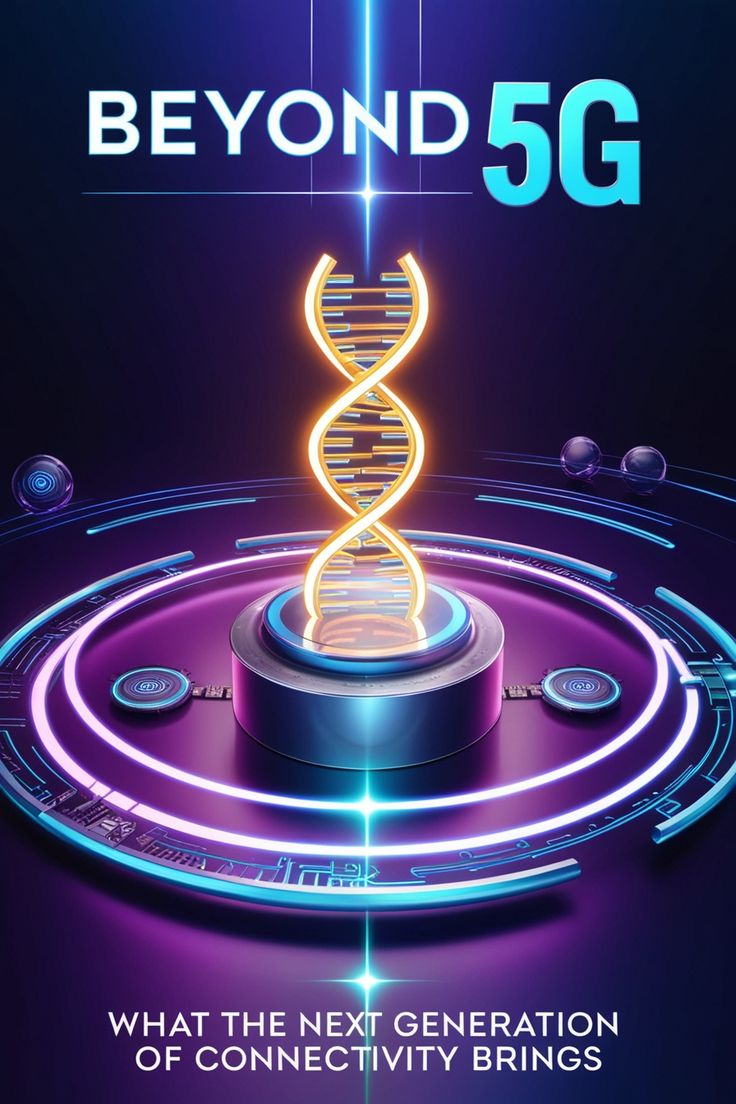5G Connectivity in 2025: Unleashing the Full Potential of the Digital Era
In 2025, 5G connectivity has become a game-changer, reshaping the way we communicate, interact, and engage with technology. Building on the foundations laid by 4G networks, 5G promises to deliver faster speeds, lower latency, and the ability to connect millions of devices simultaneously, enabling new technologies and innovations that were once the stuff of science fiction.
As the fifth generation of wireless technology, 5G is set to transform industries, from healthcare and entertainment to manufacturing, transportation, and beyond. In this article, we will explore how 5G is shaping the future, its potential applications, and the challenges and opportunities it brings in 2025.
What is 5G?
5G stands for fifth-generation wireless technology, the latest upgrade in mobile network capabilities. While 4G networks improved mobile internet speeds and accessibility, 5G takes it a step further by offering much higher data speeds, greater bandwidth, and significantly reduced latency (the delay before a transfer of data begins following an instruction). It operates across a wider range of frequencies and uses more advanced technology to handle a larger number of connected devices.
Key features of 5G include:
- Super-fast data speeds: 5G can theoretically achieve speeds of up to 100 Gbps, making it up to 100 times faster than 4G.
- Ultra-low latency: Latency in 5G networks can be as low as 1 millisecond, which is critical for real-time applications like virtual reality (VR) and autonomous vehicles.
- Massive device connectivity: 5G can support up to 1 million devices per square kilometer, a significant improvement over previous generations, making it ideal for the Internet of Things (IoT).
- Higher capacity and reliability: With more bandwidth and advanced antenna technology, 5G provides greater network reliability and can handle heavier traffic.
How 5G is Transforming Industries; 5G Connectivity
5G is not just about faster smartphones—its impact reaches far beyond mobile communication, revolutionizing industries and enabling the next wave of technological advancements.
1. Healthcare: Revolutionizing Telemedicine and Remote Surgery: 5G Connectivity
One of the most promising applications of 5G is in the healthcare industry, where ultra-low latency and high-speed data transfer are crucial. 5G-enabled telemedicine allows doctors to provide real-time consultation to patients in remote or underserved areas. Surgeons can also perform remote surgeries using robotic arms, with 5G ensuring precise, real-time communication and feedback.
Additionally, 5G allows for continuous, real-time monitoring of patients’ health through wearable devices connected to the network. This makes it easier to track vital signs, administer early interventions, and improve the quality of care.
2. Autonomous Vehicles: Safe and Efficient Transportation: 5G Connectivity
In the automotive industry, 5G is driving the development of autonomous vehicles. By providing near-instantaneous communication between vehicles, infrastructure, and the cloud, 5G enables vehicles to react to traffic conditions, pedestrians, and other obstacles in real time. This increases the safety and efficiency of self-driving cars and facilitates vehicle-to-everything (V2X) communication, which can reduce accidents and optimize traffic flow.
The combination of 5G with vehicle-to-vehicle (V2V) and vehicle-to-infrastructure (V2I) communication is expected to make cities smarter, improving public transportation and traffic management systems.
3. Manufacturing and Industry 4.0: Automation and Smart Factories: 5G Connectivity
In manufacturing, 5G is at the heart of the Industry 4.0 revolution, enabling the automation of factories and supply chains. With its high speed and low latency, 5G enables real-time data analysis, remote operation of machines, and seamless communication between devices. This leads to improved operational efficiency, cost savings, and enhanced supply chain management.
Additionally, 5G supports the growth of smart factories where machines, robots, and workers communicate through connected sensors and devices. This leads to increased productivity, reduced downtime, and greater precision in manufacturing processes.
4. Entertainment and Media: Immersive Experiences: 5G Connectivity
5G will also redefine the way we experience entertainment and media. The massive increase in bandwidth will allow for the streaming of 4K and 8K videos with no buffering or interruptions, as well as the development of augmented reality (AR) and virtual reality (VR) experiences.
For instance, 5G-powered gaming will bring ultra-realistic, immersive experiences to mobile devices, allowing players to enjoy cloud gaming without the need for expensive hardware. Similarly, in the film industry, 5G will allow for high-definition live streaming, enabling better quality content delivery across devices.
5. Internet of Things (IoT): Connecting the World: 5G Connectivity
The Internet of Things (IoT)—the network of interconnected devices and sensors that communicate and exchange data—is set to benefit greatly from 5G technology. With its ability to handle a massive number of connected devices simultaneously, 5G will support the growth of smart homes, smart cities, wearable technology, and connected appliances.
For example, 5G will enable smart homes where appliances like refrigerators, lights, thermostats, and security systems communicate with each other to create a seamless living experience. In smart cities, 5G will support infrastructure like traffic lights, public transportation systems, and utility meters, improving urban planning, resource management, and sustainability.
5G and the Future of Communication: 5G Connectivity
The potential of 5G extends beyond its technological capabilities to the way we communicate. With its high-speed data transfer, it will enable more effective remote working, as well as virtual collaboration tools that rely on high-quality video and data sharing. In the education sector, 5G will support e-learning and virtual classrooms, allowing students from different parts of the world to connect in real-time with minimal latency.
Moreover, 5G-enabled mobile devices will offer faster, more reliable internet connections, making it easier to download large files, stream media, and access cloud-based services. For businesses, this means greater connectivity, faster data exchange, and improved customer engagement.
Challenges of 5G Connectivity: 5G Connectivity
While the benefits of 5G are undeniable, there are several challenges that must be addressed before its full potential can be realized:
1. Infrastructure Development; 5G Connectivity
Building the necessary 5G infrastructure requires massive investments in new cell towers, antennas, and fiber-optic networks. In many regions, the rollout of 5G has been slower than anticipated due to these infrastructure challenges, as well as regulatory hurdles and the need for spectrum licenses.
2. Security Concerns; 5G Connectivity
With the exponential growth of connected devices and data exchange, cybersecurity becomes an even greater concern. 5G networks must be designed to handle threats such as data breaches, hacking, and privacy violations. Stronger security protocols will be needed to ensure that 5G networks are protected from malicious attacks.
3. Health and Safety Concerns; 5G Connectivity
Some concerns have been raised about the potential health effects of 5G’s radiofrequency electromagnetic fields. While studies have not shown any significant health risks, ongoing research will be needed to ensure the safety of 5G networks and their impact on human health.
The Future of 5G Connectivity
5G Connectivity: As we look ahead to the coming years, 5G will continue to evolve, unlocking new possibilities for industries and consumers alike. By 2025, we can expect even greater advancements in 5G technology, including enhanced network slicing, which will allow for the creation of custom networks tailored to specific applications or industries, and further integration of artificial intelligence (AI) to optimize network performance.
5G will be the backbone of the digital transformation, facilitating smart cities, autonomous vehicles, IoT innovations, and next-generation healthcare solutions. As 5G connectivity continues to expand globally, it will create new opportunities for growth, innovation, and societal progress, ultimately shaping the future of communication and connectivity.










